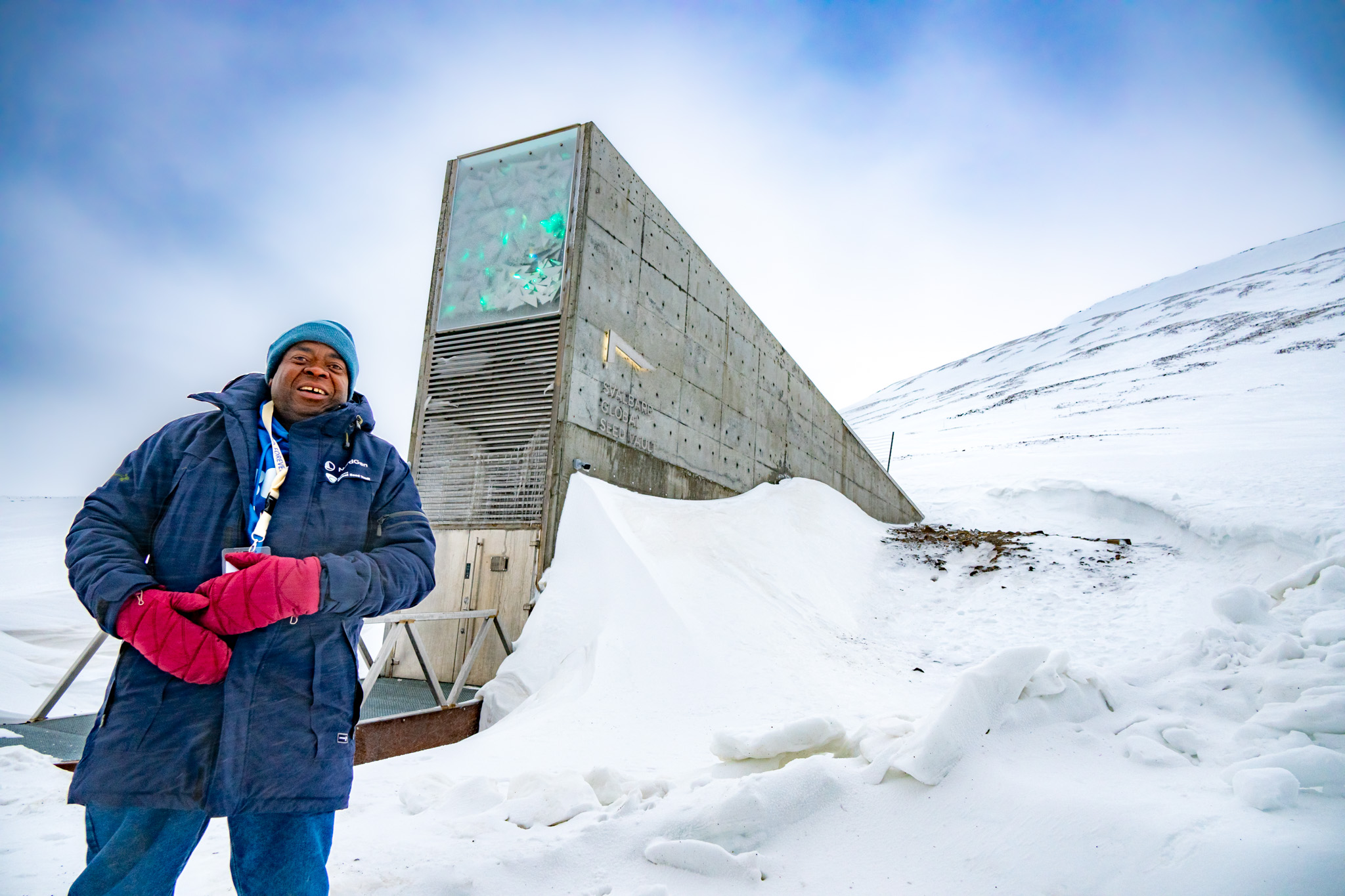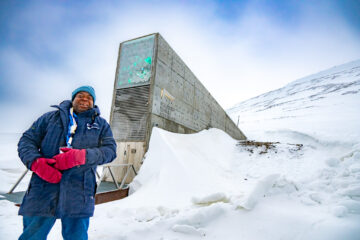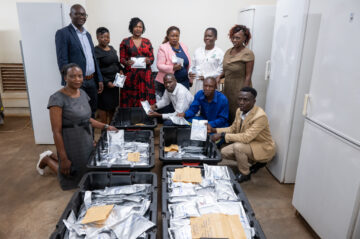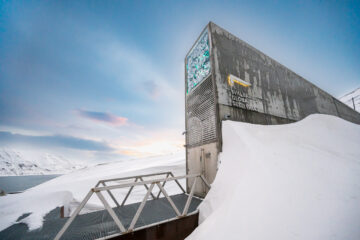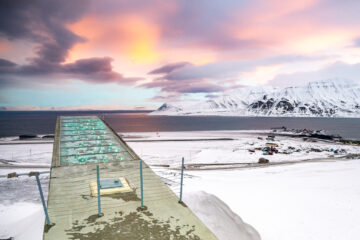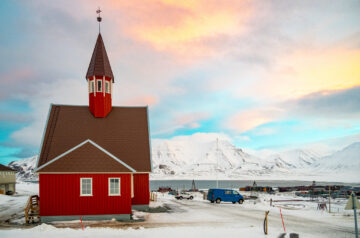It’s a long long way between Zimbabwe and the Svalbard Archipelago in the Barents Sea inside the Arctic Circle.
It’s 10,500 km precisely.
That’s a long way for a seed to travel. But a bunch of vacuum packed seeds of rice, sorghum, millets and groundnuts made that journey this week.
I saw those seeds at the beginning and end of their journey. Last September, I travelled to Zimbabwe to see those seeds being multiplied, cleaned and processed for their long journey to the Arctic.
And yesterday I saw those same seeds arrive at the Longyearbyen International Airport. That’s actually the furthest north you can fly on a commercial airline. And pretty much the furthest northern part of Earth where you’ll find a permanent population of human beings. It’s halfway between the Arctic Circle and the North Pole.
That’s really really North.
And it stays pretty cold up there year round. It never fully thaws…it’s permafrost. Well, it’s not so ‘perma’ these days but that’s a story for another day.
But it’s a great place to store seeds for a very long time.
So about 20 years or so some very foward looking agricultural scientists started exploring some options of storing seeds in some old coal tunnels at Svalbard. They figured they could so they built the Svalbard Global Seed Vault with the invaluable support of the Government of Norway.
If seeds are super dry and cold they can remain viable for many years. Decades, in fact. So the old coal mine provides a perfect dry and cold storage location.
We humans have created a bit of a mess for ourselves. We are losing the diversity of our agricultural crops. And if our crops are going continue to grow under the changing climate that we’ve also messed up, plant breeders are going to need to tap into that crop diversity. So we need to conserve it before we lose it.
For the long term, forever.
And that’s what the Svalbard Global Seed Vault does. It’s the ultimate backup spot for seeds conserved in more vulnerable locations worldwide.
The media have coined it the ‘Doomsday Vault’. Like the place where humanity will go to after an apocalypse where we can rebuild our agricultural systems. That wasn’t really the idea. It’s more of a backup system and that proved workable when a research centre in Syria actually had to withdraw seeds due to conflict. But if the world follows the trends of the United States post 20 January perhaps ‘Doomsday Vault’ is indeed appropriate.
For now having that secure backup of the world’s agriculture gives us a bit of hope that we’ll have food security and a bit of hope for humanity before we mess up Planet Earth any more.
It’s a long long way for a human being to travel from Australia to Svalbard. It’s 13,200 km which is about the longest possible distance between two inhabitable places on Earth. But I went there with my colleagues from the Crop Trust’s BOLD Project to see some seeds being securely deposited in the Seed Vault.
The Crop Trust invited about 10 of its partners from around the world to come and deposit their seeds in the Vault. It was pretty emotional for them to personally carry their national heritage and leave it on the shelves along with 85 other countries. A blasting Arctic wind and stinging snow couldn’t hide the brilliant smiles on their faces as they handed the seeds of their nation over to the Vault’s custodian.
Today those seeds from Zimbabwe are resting from their long journey on the icy shelves deep inside the Vault. Theoretically it should be their final resting place. But it we continue to mess up our climate, lose our crop diversity and destroy the master copies of the seeds, we might just have to wake them up and ask them to take another journey to save us from ourselves.
All images used on this page were photographed by Michael Major for the Crop Trust and used here under a CC BY-NC-ND 2.0 license.

